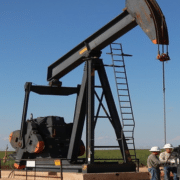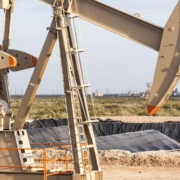⚠️ IMPORTANT LEGAL DISCLAIMER:
The information provided on this page is for general informational purposes only and does not constitute legal, financial, or investment advice. Oil and gas laws, mineral rights regulations, and royalty structures vary significantly by state and jurisdiction. While we strive to provide accurate and up-to-date information, no guarantee is made to that effect, and laws may have changed since publication.
You should consult with a licensed attorney specializing in oil and gas law in your jurisdiction, a qualified financial advisor, or other appropriate professionals before making any decisions based on this material. Neither the author nor the publisher assumes any liability for actions taken in reliance upon the information contained herein.
All across the country, warehouses lie on the outskirts of towns, cities, and rural areas. Warehouses are extremely functional for storing materials for companies, artists, communities, emergency materials, and so much more. Essentially, if something needs to be stored, there is a warehouse somewhere waiting for it.
Knowing this, many developers and investors choose to buy, build, and sell warehouses as high priced pieces of land and property. Selling a warehouse anywhere in the world often comes with a huge capital gain, and therefore many taxes.
With a 1031 exchange, capital gains taxes can be avoided when selling warehouses and purchasing another property. Today, mineral rights and royalties can be purchased after the sale of a warehouse using a 1031 exchange. With this in mind, capital gains taxes are avoided, and a new potential income stream is born.
In this article, we will detail the steps to take when selling a warehouse, and using a 1031 exchange to secure mineral rights and royalties.
How to Sell A Warehouse
If you google “how to sell a warehouse,” unfortunately, most of the results are designed to help people trying to sell a warehouse in Grand Theft Auto 5. Digging a little deeper, it is actually easier to sell a warehouse than you might imagine.
Although the target market is a bit different, selling a warehouse is very similar to selling any other property. There are many online marketplaces designed specifically for property sales, many of which have filters for those looking specifically for warehouse space.
Determining the Value of A Warehouse
Whereas many warehouse owners lease sections of their space to multiple owners, the outright sale of a warehouse usually comes at a hefty sum. With this in mind, a warehouse is essentially the sum of all its physical and fiscal parts.
The value of a warehouse is determined by:
- Warehouse Size
- Warehouse Conditions
- Property Size and Conditions
- Access (Driveways, Garages, etc)
- Current Tenants (if applicable)
- Warehouse Type (Designed for cars, shipping, etc.)
- And more
- Thankfully, most warehouse properties across the country have publically available records of their value. Even if you are unable to see a property’s history for yourself, there is always the option to match the price value of your warehouse with similar properties in your area.
Taxes Paid on the Selling Warehouses
Before you cash that check, remember that there are considerable taxes to be paid after selling a warehouse. As the gross payout increases, so does the amount of money that you are equally required to pay local and national governments.
Depending on location, the following are usually paid on the sale of a warehouse:
- Federal Income Taxes
- Capital Gains Taxes (Long or Short Term)
- Local Sales Taxes
- State Taxes
- Depreciation Recapture Taxes
- And More
With a large price tag, capital gains taxes can be expected. However, as we mentioned above, a 1031 exchange can be used to avoid capital gains taxes on the sale of a warehouse.
Selling Warehouses with a 1031 Exchange
With a 1031 exchange, taxpayers can “trade-up” warehouses for a new property of equal or greater value in order to completely eliminate capital gains taxes. Deadlines must be met and paperwork must be processed, so we highly recommended working with a 1031 exchange intermediary to ensure a successful amendment to your taxes.
Warehouse Like-Kind Properties
Under the gaze of the IRS, most properties can be considered “like-kind” to warehouses. In a 1031 exchange, taxpayers can purchase any of the following after the sale of a warehouse for an elimination of capital gains taxes:
- Other Commercial Buildings
- Mineral Rights and Royalties
- Homes and Apartment Buildings
- Strip Malls and Stores
- Trailer Parks
- Golf Courses
- And more
Warehouses 1031 Exchange Timeline
After you sell a warehouse, you are not given a whole lot of time to roll around in your money if you’d like to use a 1031 exchange. The IRS mandates that at least one reasonable property must be identified for purchase within 45 days of the sale.
Of course, this first property does not necessarily have to be the one used in the exchange. Up to 3 properties can be identified regardless of value and one must be purchased within 180 days of the sale for the 1031 exchange to be valid. With this in mind, it is always advised to have a rough idea of what you’ll be reinvesting in before the sale of your warehouse is finalized.
Why Purchase Mineral Rights and Royalties?
Mineral rights and royalties are usually not the first property that comes to mind when using a 1031 exchange in the sale of a warehouse. However, in the United States, mineral rights and royalties can be an extremely valuable part of any investment portfolio.
If you’re not familiar here’s how it works:
- The acquisition of mineral rights allows you to own all or a portion of the subsurface of a property.
- The land is leased to an oil and gas company that extracts and sells the land’s natural resources.
- You receive mineral royalty payments as a fixed percentage of the sales designated by your mineral rights ownership.
How to Maximize Your 1031 Exchange with Mineral Rights
If you are planning to use an intermediary with your 1031 exchange, you have the opportunity to work with a specialist in any industry you choose to reinvest in. For mineral rights and royalties, industry jargon, complicated contracts, and lack of transparency can cause headaches for first-time investors. With this in mind, working with a specialist is always recommended.
Conclusion
Whether it was built to be sold or has already served its purpose, selling a warehouse is a big deal for property owners. With today’s laws and opportunities, using a 1031 exchange to purchase mineral rights after the sale of a warehouse is a great way to intelligently reinvest your income to avoid taxes and maximize ROI.
Remember: This information is for educational purposes only. Consult qualified professionals for advice specific to your situation and jurisdiction.










